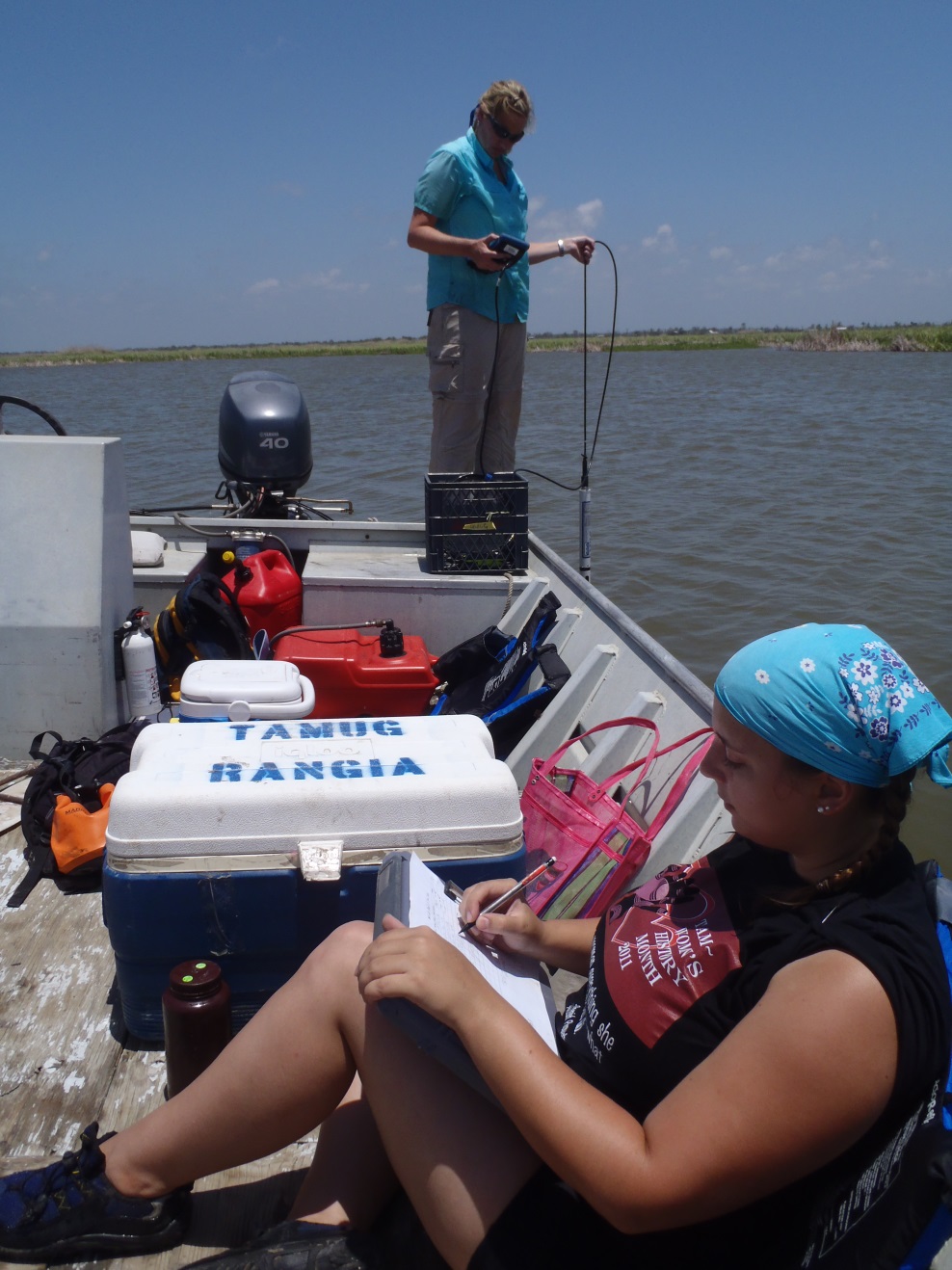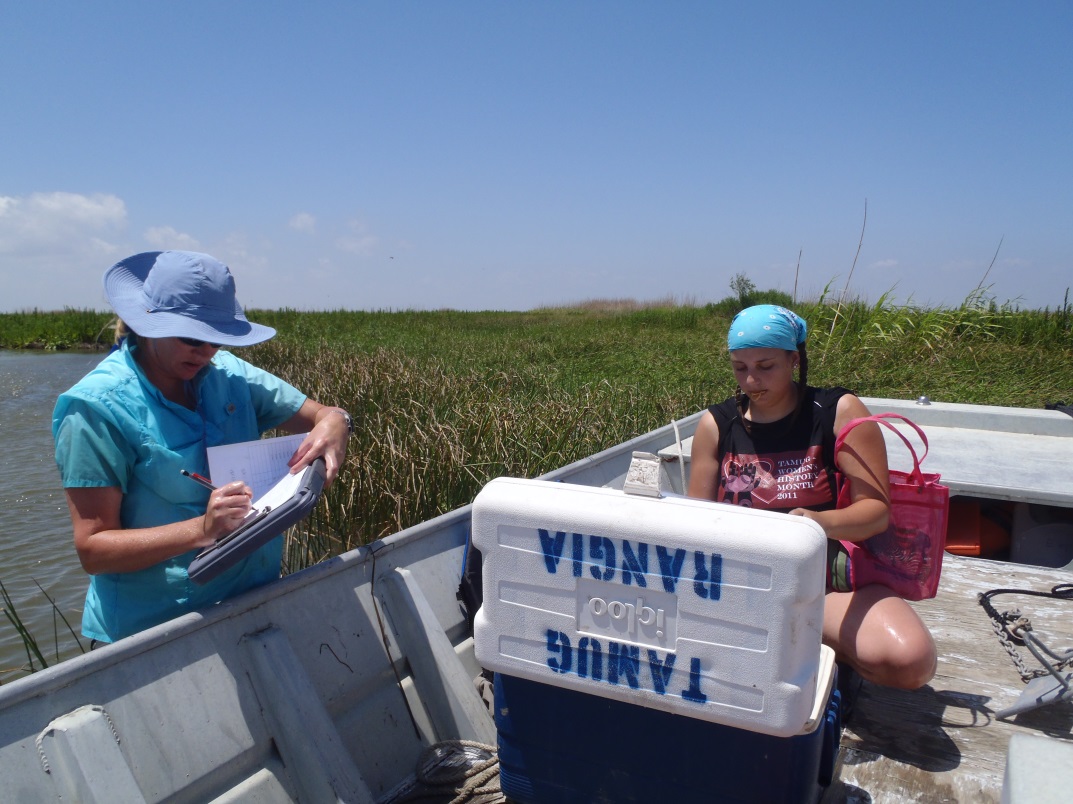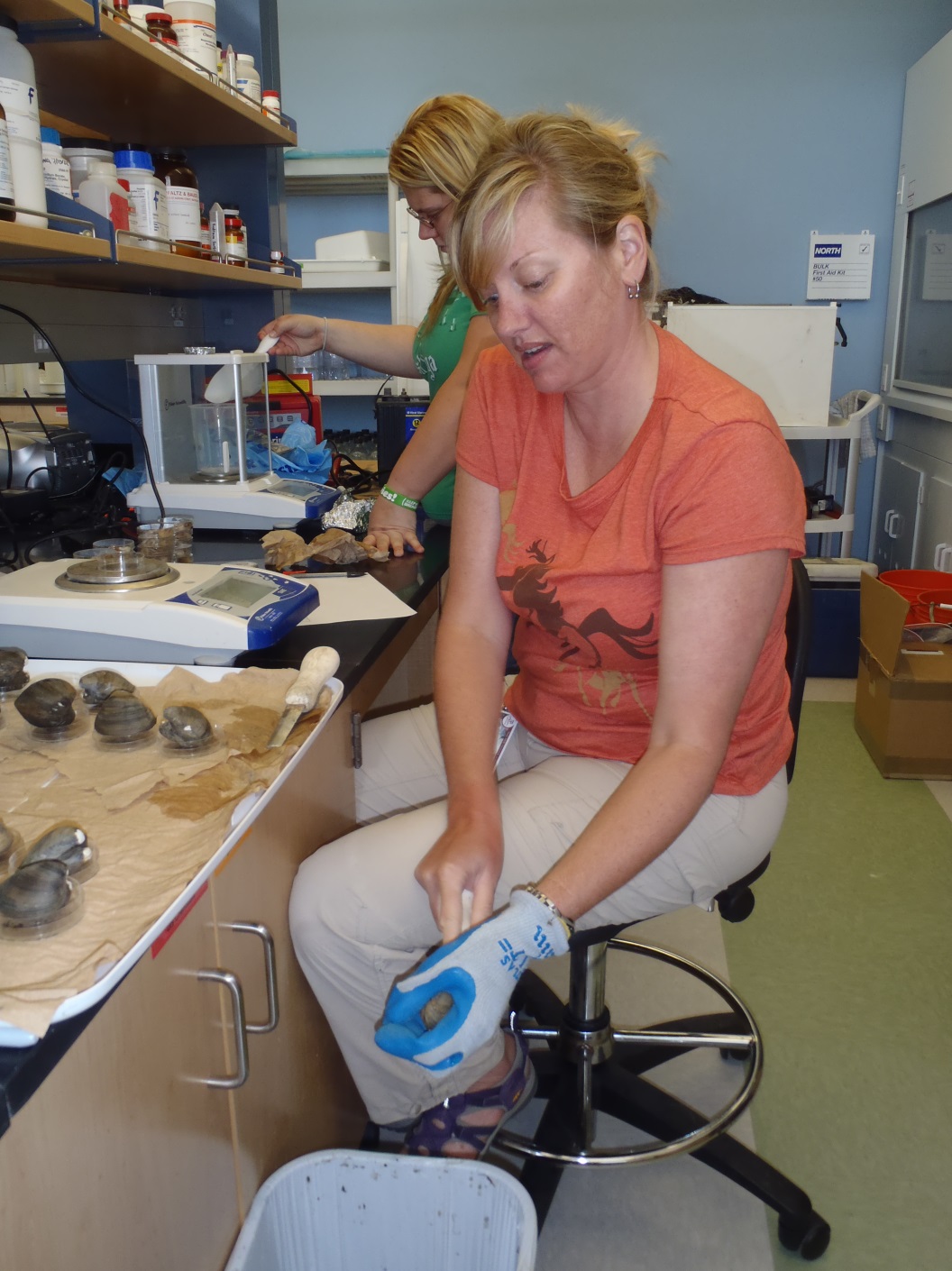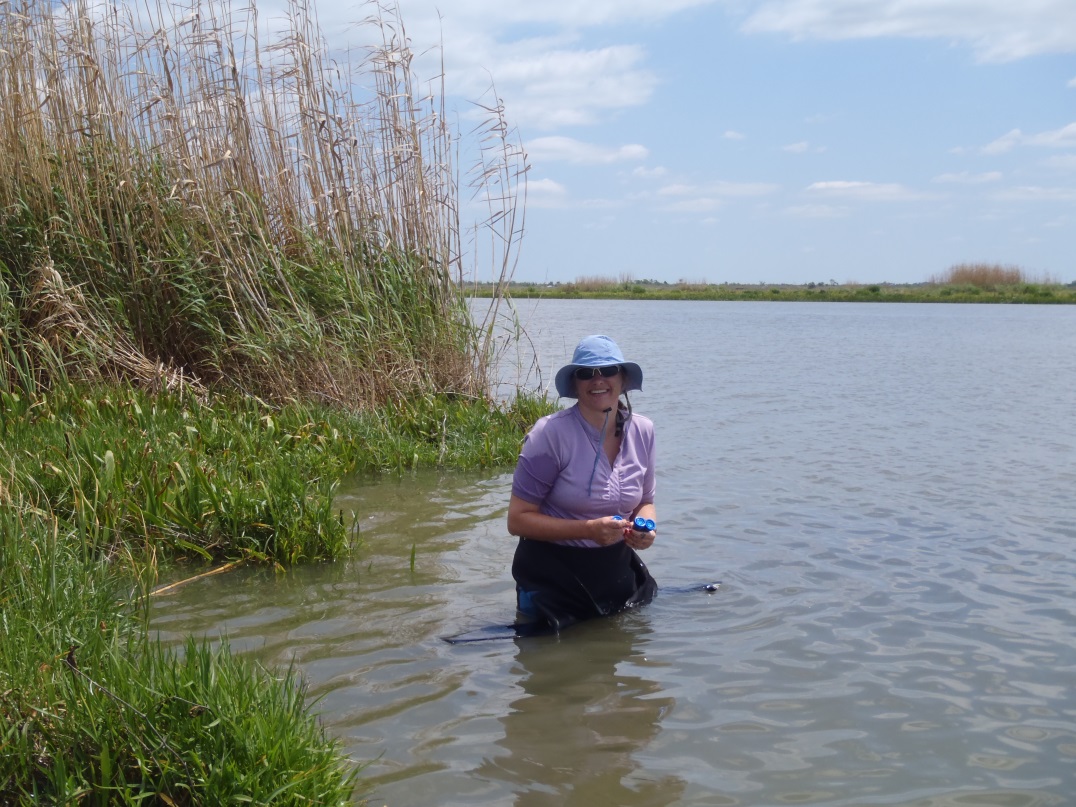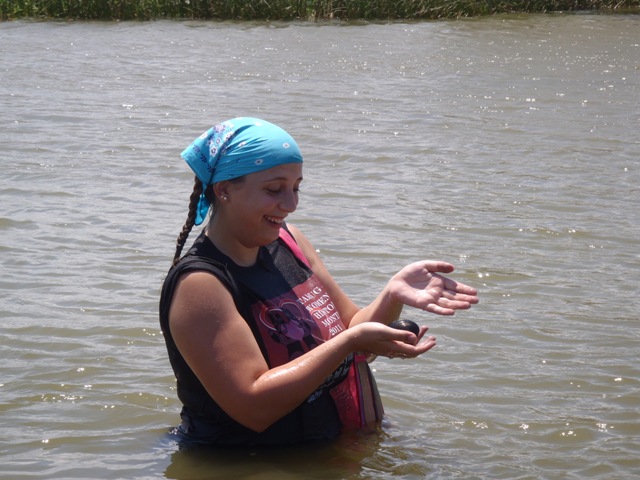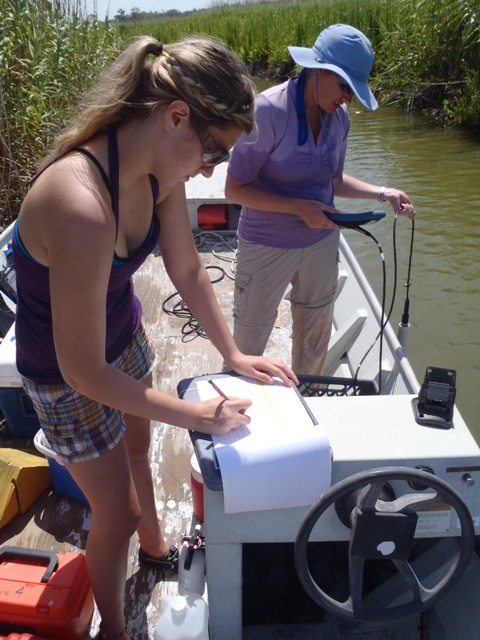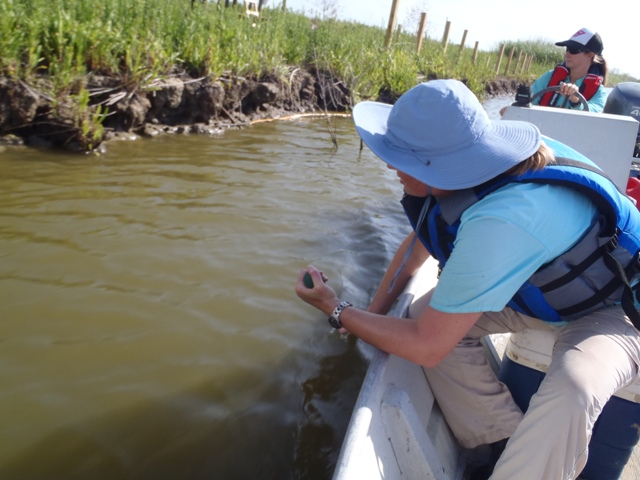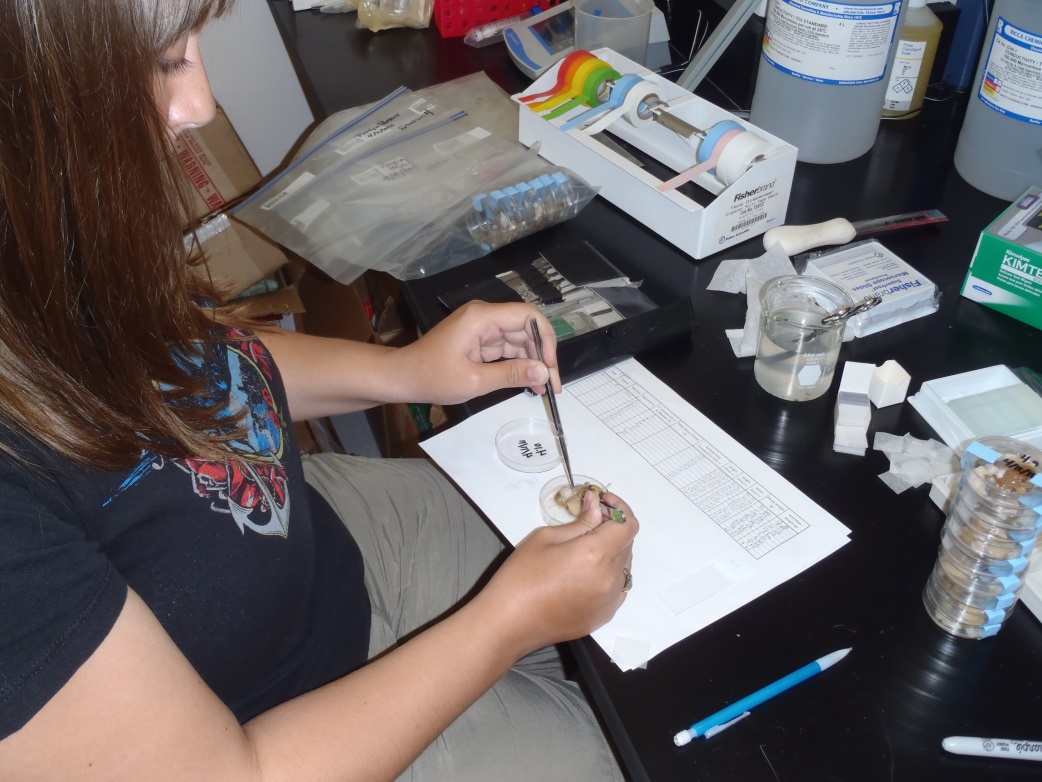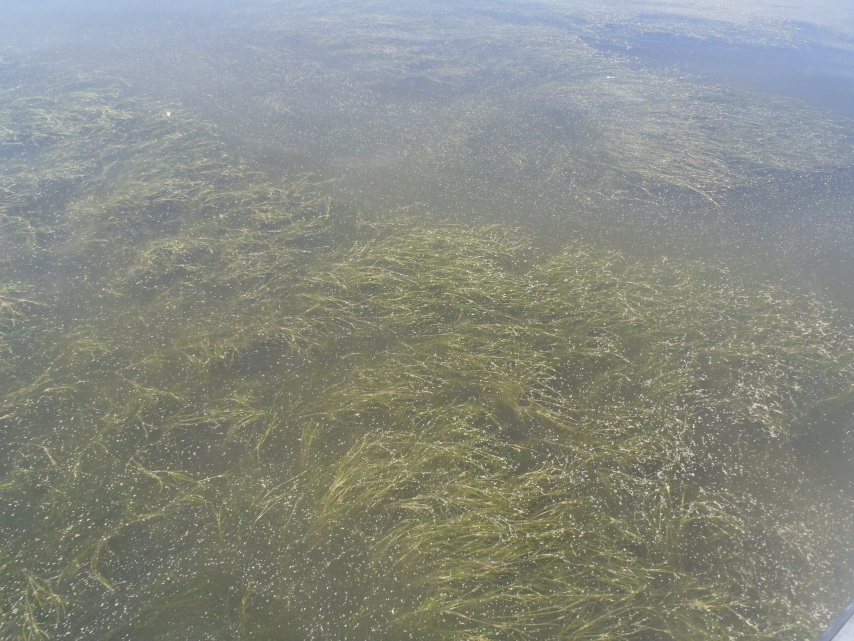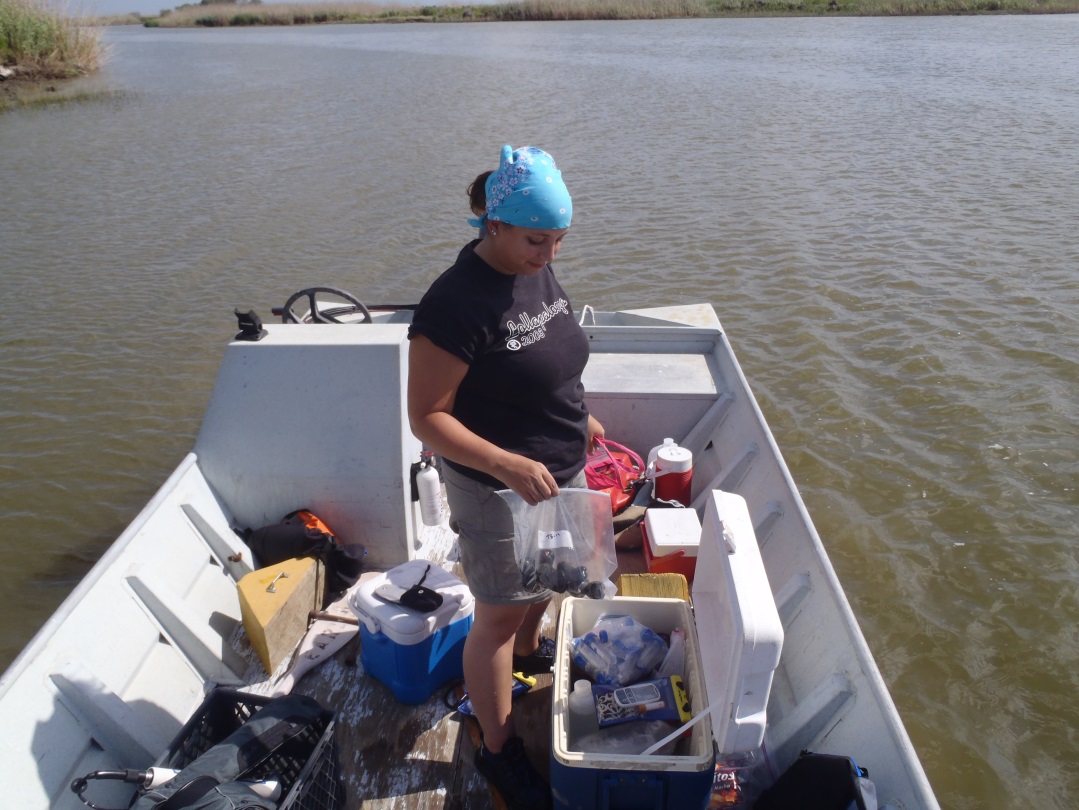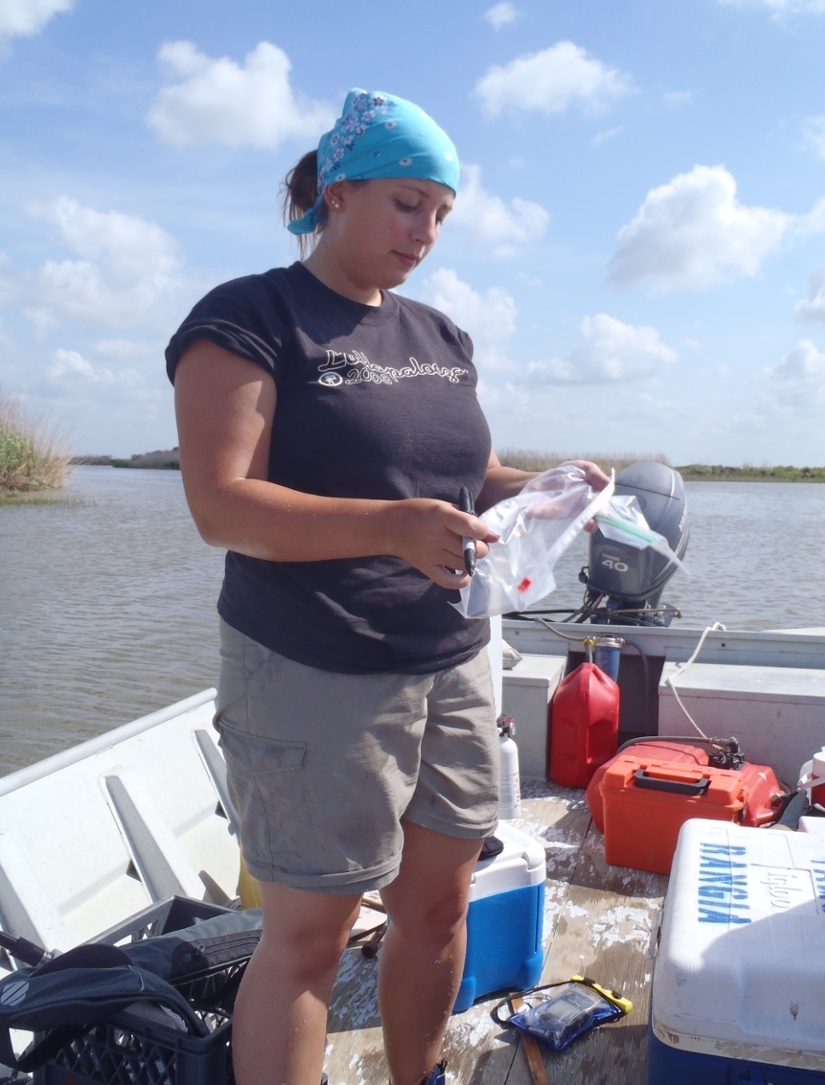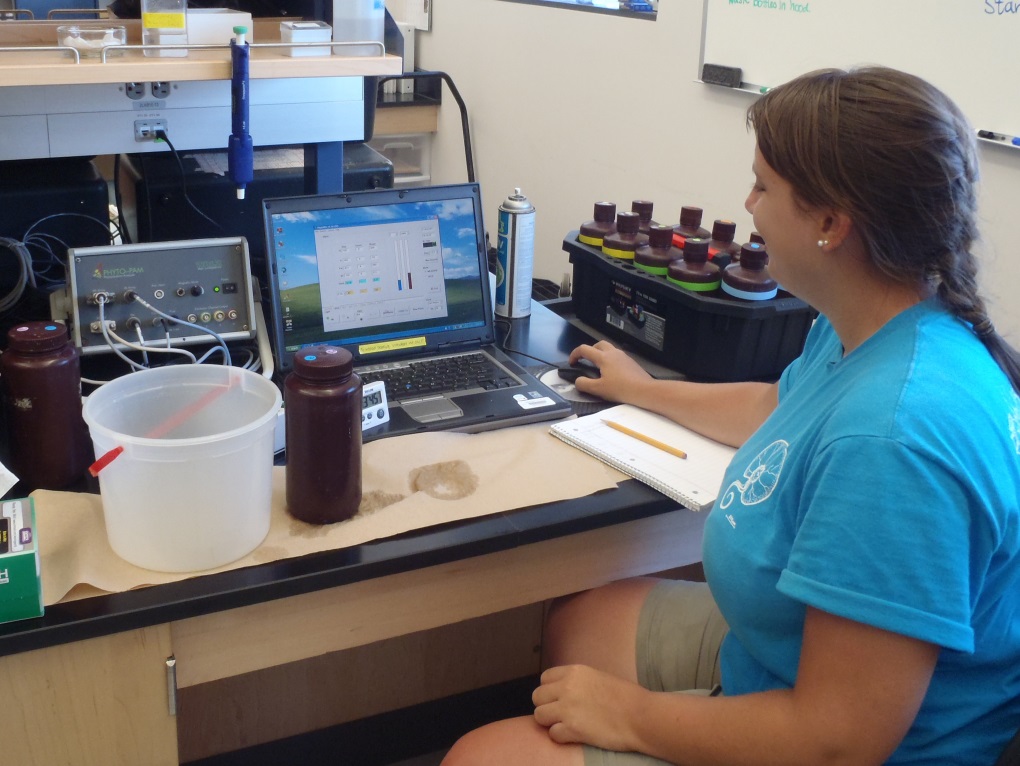Freshwater Inflows
Changes in the characteristic hydrological and physio-chemical nature of bays, basins, estuaries and bayous worldwide are occurring as a result of increased nutrient inputs (e.g., anthropogenic inputs from waste water treatment facilities and groundwater seepage) associated with urbanization and industrialization, alterations in the magnitude and frequency of freshwater inflows, changes in water circulation patterns (e.g., dredging programs for ship channels) and other human induced changes including but not limited to fishing, tourism and other ecosystem services. The most frequently investigated phenomena are eutrophication (Quigg et al. 2009) and harmful algal blooms, which may lead to fish kills (Thronson & Quigg 2008; McInnes and Quigg 2010) and the loss of other fauna, flora, and/or habitats. Changing land use patterns, largely driven by rapid coastal development, has increased pressure to develop management strategies to protect marine flora, fauna and habitats whilst providing for human activities. We still lack a clear understanding of specific factors which are important in individual estuarine systems.
Texas House Bill (HB) 3 and Senate Bill (SB) 3
Created by the 80th Texas Legislature, 2007, in recognition of the importance that the ecological soundness of our riverine, bay, and estuary systems and riparian lands has on the economy, health, and well-being of our state, House Bill (HB) 3 and Senate Bill (SB) 3, requires the Texas Commission on Environmental Quality (TCEQ) to adopt, by rule, appropriate environmental flow standards for each river basin and bay system in the state. Senate Bill 3 begins the implementation of the state's 50-year water plan.
This is the first time in the state's history that the state's obligation to set aside a volume of water for the protection of the environment has been recognized. SB 3 contains environmental flows provisions that will move Texas towards setting aside water for fish and wildlife, while still meeting human water needs and protecting existing water rights of cities, agriculture and industry. SB 3 is a major step towards ensuring that future generations of Texans have flowing, healthy rivers and productive bays, estuaries and fisheries.
Developing bioindicators for healthy estuaries
In Texas and other locations, studies have shown that changes in freshwater inflows affect productivity of juvenile brown shrimp, macrophyte productivity, root:shoot ratios and species diversity, and benthic macrofaunal and meiofaunal densities and diversity. Coastal wetland loss in Louisiana has been attributed to a reduction in sediment loading as a result of freshwater diversion. Factors equally important, but not as often addressed, include the magnitude of flushing and nutrient loading, the mode of nutrient loading, and the ratios of potentially limiting nutrients within the load.
In order to develop a conceptual understanding of the downstream ecological impacts of changes in freshwater inflows, we are working towards developing a set of bioindicators focused initially on Galveston Bay, but also, those which maybe more generally applicable to other ecosystems:
A. Phytoplankton
At the base of the food web, phytoplankton can be considered sensitive bioindicators of the health of waterways. The appearance of new and/or harmful phytoplankton species has been used to identify potential environmental stressors in places such as the Neuse River Estuary and Chesapeake Bay. Mass fish mortalities are frequently associated with the occurrence of harmful algal blooms, hypoxia, and other changes in phytoplankton dynamics (Thronson and Quigg, 2008; McInnes and Quigg, 2010). More recent studies by our group focus on phytoplankton community composition (species identification, HPLC/Chemtax), biomass (measured as chlorophyll a), response to resource changes (nutrients, light, grazing). Our first paper:
Roelke, D.L., Hayden, N., Li, H-P., Miller, C.J., Davis, S. E., Quigg, A. and Buyukates, Y. 2013. Insensitivity of seasonal plankton dynamics to inflows in a large, shallow bay system: A need for monitoring over spatial scales larger than the target system. In press. Marine Ecology Progress Series.
B. Vallisneria americana (Wild celery)
Vallisneria has historical been found in the upper Trinity River basin of Galveston Bay. Germination and establishment of plants (in spring) requires low salinities (< 5 psu) while adult plants can tolerate higher salinities (up to 15 psu). As part of the Senate Bill 3 process (see above), the Basin and Bay Expert Science Team (BBEST) for Galveston Bay determined that the salinity range for germination should be met one month in the spring and the salinity range for survival should be met for 2 of 3 months in summer and fall.
We have been surveying the upper Trinity River basin of Galveston Bay since the Spring of 2011 but have not located Vallisneria in this area or anywhere else in Galveston Bay. One reason for its absence may be the drought of 2011 which started in October 2010 and persisted for almost a year. As a result of the drought, salinities were much higher throughout the Bay for a prolong period (see Galveston Bay page). The absence of Vallisneria in the Spring of 2012 is hypothesized to be associated with the extensive and pervasive nature of the drought. Surveys will be performed in Spring 2013 also.
C. Rangia cuneata (Atlantic clams)
The Basin and Bay Expert Science Team (BBEST) for Galveston Bay proposed that Rangia clams would also be a good bioindicator species of freshwater inflows because (i) they can live only within a narrow range of salinities (< 18 ppt) and further, can only spawn over an even narrower range of salinities (2 to 10 ppt), and (ii) the adult clams rarely move, making them an ideal sentinel.
Using the Texas Parks and Wildlife (https://tpwd.texas.gov/) database, we have examined Rangia distributions in Galveston Bay from 1983 to December 2009. Greatest Rangia counts are associated with the area closest to the mouth of the Trinity River. In some years, Rangia were found in other locations (e.g., East Bay) adjacent to know freshwater sources. We continue to perform surveys with Texas Parks and Wildlife as well as develop the concept of using Rangia clams as bioindicators.
D. Crassostrea virginica (Eastern oyster)
In estuaries around the world, oysters are highly valued, playing both important economic and ecological roles. For decades, the eastern oyster and its principal parasite Perkinsus marinus (dermo), have been used to monitor the environmental health of estuaries along the Gulf of Mexico. The oyster, it’s parasite and predators, are used as bioindicators to evaluate the freshwater needs of estuarine ecosystems. Much of the work to date can be found at Oyster Sentinel (http://www.oystersentinel.org/), a web-based community website established in 2007 by Drs. Sammy M. Ray (rays@tamug.tamu.edu) and Thomas M. Soniat (tsoniat@uno.edu) to promote the health of estuaries along the Gulf of Mexico.
Salinity is known to be one of the important factors (e.g., higher salinities; higher Dermo intensities) affecting the health of oysters; the other is temperature. We are working with Dr. Sammy Ray, specifically examining the oyster and dermo data he has collected for Galveston Bay since 1998. We will assess the feasibility of using oysters as a bioindicator of freshwater inflows in Galveston Bay.
Some recent publications:
Dorado, S., Booe, T., Steichen, J., McInnes, A. S., Windham, R., Shepard, A. K., Lucchese, A., Preischel, H., Pinckney, J. L., Davis, S. E., Roelke, D. L. and Quigg, A. 2015 Towards an understanding of the interactions between freshwater inflows and phytoplankton communities in subtropical estuaries. PLOS One. 10(7): e0130931. DOI:10.1371/journal.pone.0130931
Roelke, D.L., Li, H-P., Hayden, N.J., Miller, C.J., Davis, S. E., Quigg, A. and Buyukates, Y. 2013 Co-occurring and opposing freshwater inflow effects on phytoplankton biomass, productivity and community composition of Galveston Bay, USA. Marine Ecology Progress Series. 477: 61–76.
